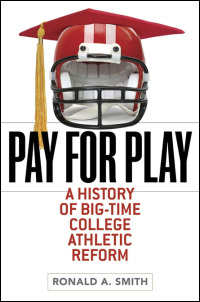 Both Inside Higher Ed and the Chronicle of Higher Ed published pieces this week on new NCAA president Mark A. Emmert’s comments related to the recent college football scandals.
Both Inside Higher Ed and the Chronicle of Higher Ed published pieces this week on new NCAA president Mark A. Emmert’s comments related to the recent college football scandals.
In the comments section following the Inside Higher Ed column, Guido Stempel highlights two of my biggest personal complaints with the current system:
1. Collegiate team apparel featuring a prominent athlete’s number is sold making money for everyone along the manufacturing and distribution stream except the collegiate athlete who wears the number. I saw a lot of #11 Illini basketball jerseys here in Champaign-Urbana (including one in my household) when Dee Brown was leading the team to the NCAA championship game . Dee didn’t receive any of the proceeds.
2. “The recruited athlete is bound to renew the agreement annually for four years, but the athletic department is not. They can decide not to renew at their convenience or the coach’s convenience. The coach he came to play for can leave, but if the player wants to transfer he has to sit out a year.”
So, Bill Self can leave Illinois for a huge contract at Kansas, and not sit out a year from coaching, but the players on Illinois’s team who were recruited by Self, would have to sit out a year if they tranferred to another Division 1 school.
Good timing then for some context from Ronald A. Smith’s new book Pay for Play: A History of Big-Time College Athletic Reform, which traces attempts at college athletics reform from 1855 through the early twenty-first century while analyzing the different roles played by students, faculty, conferences, university presidents, the NCAA, legislatures, and the Supreme Court.
